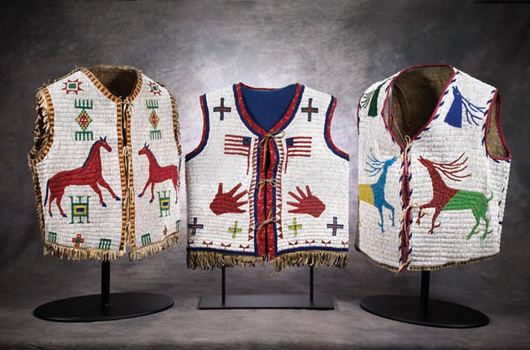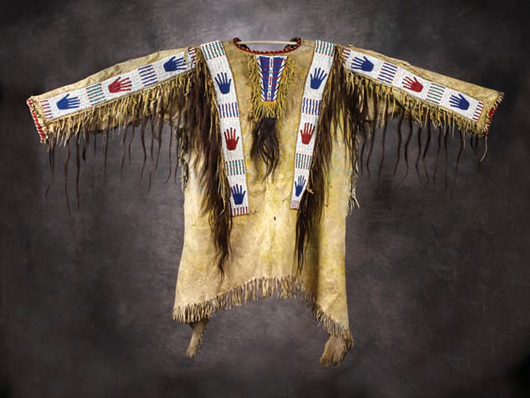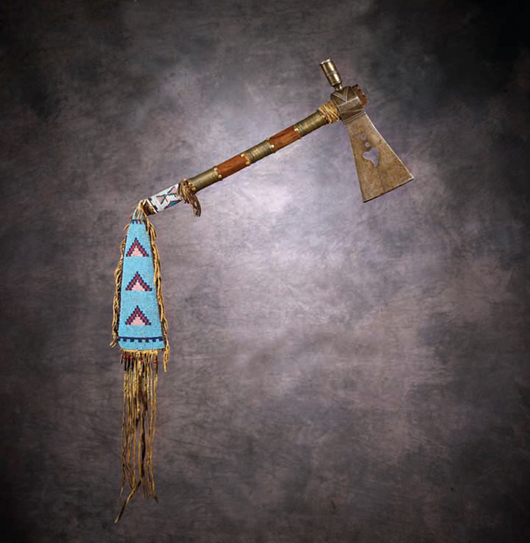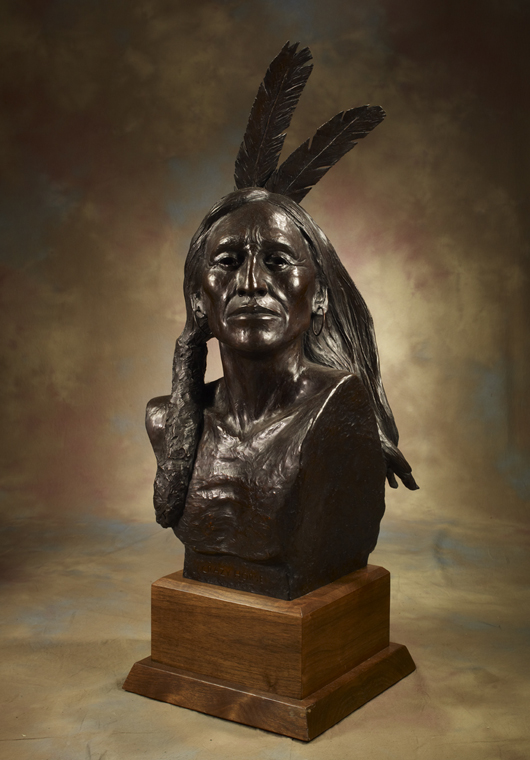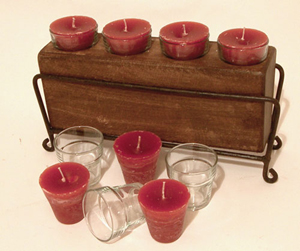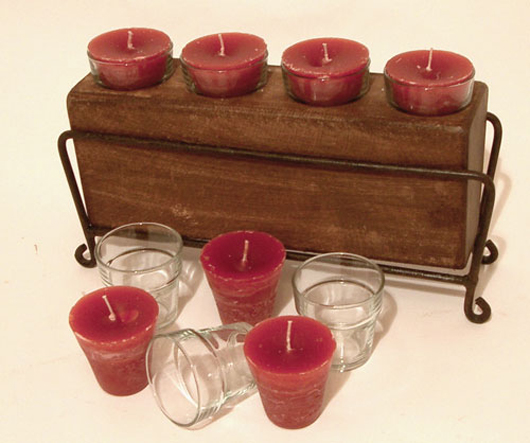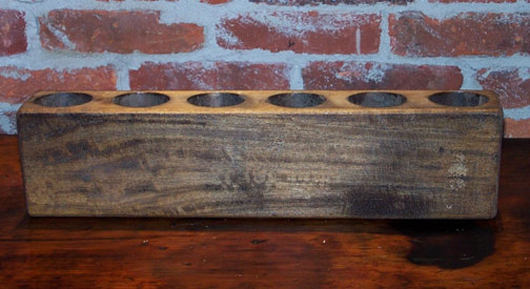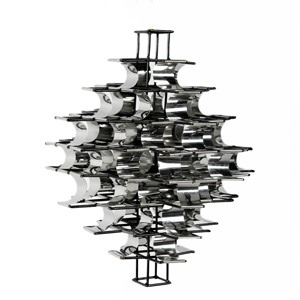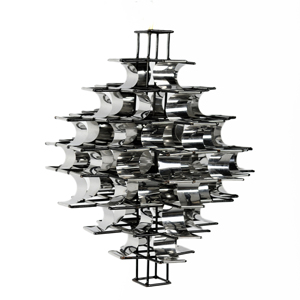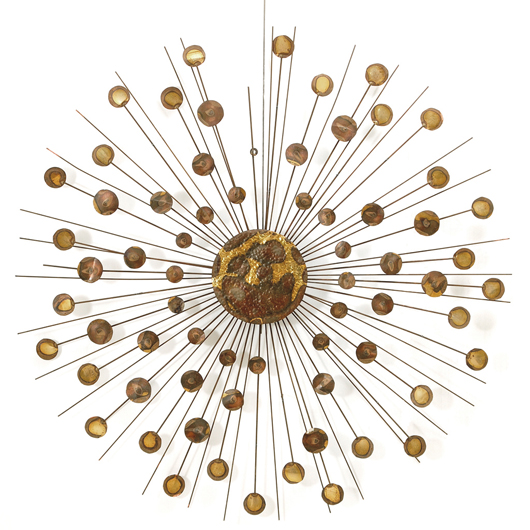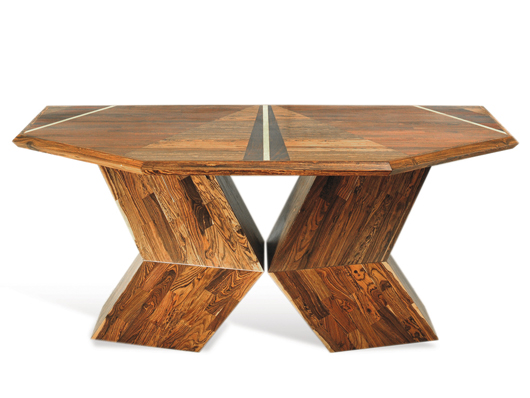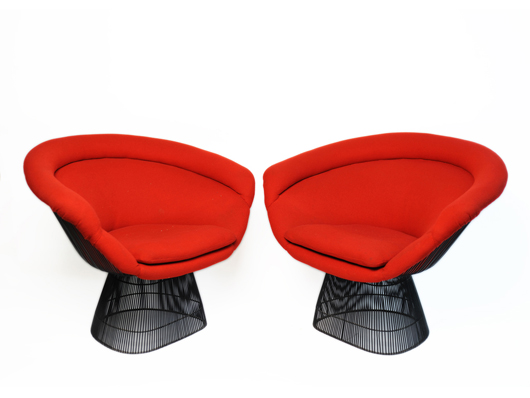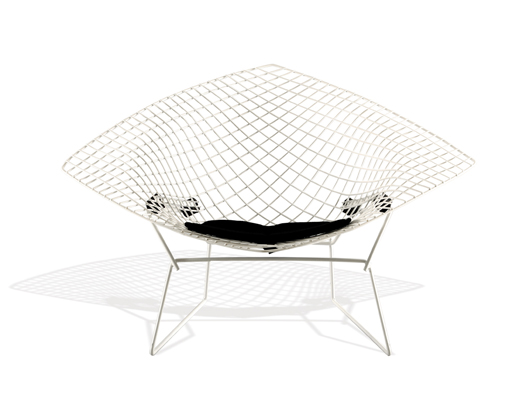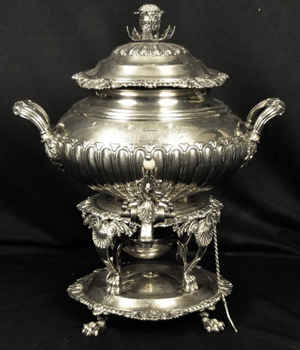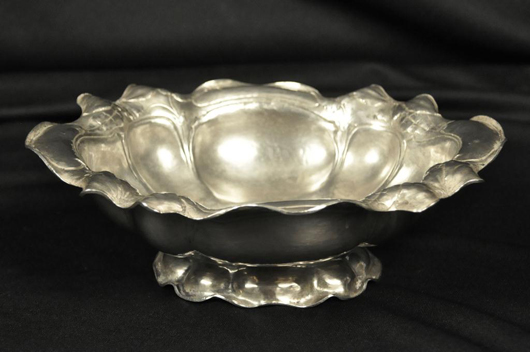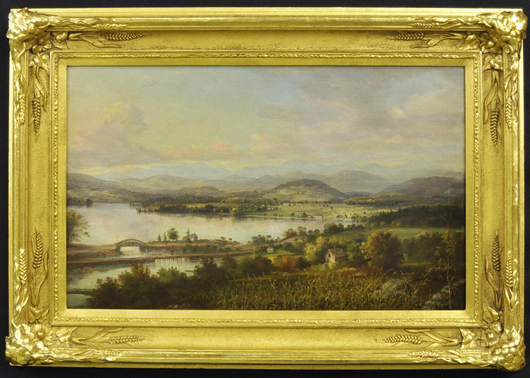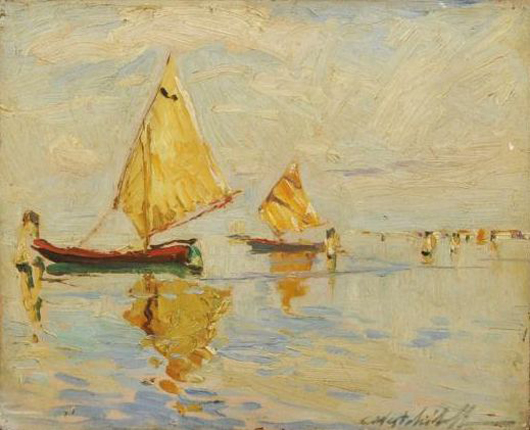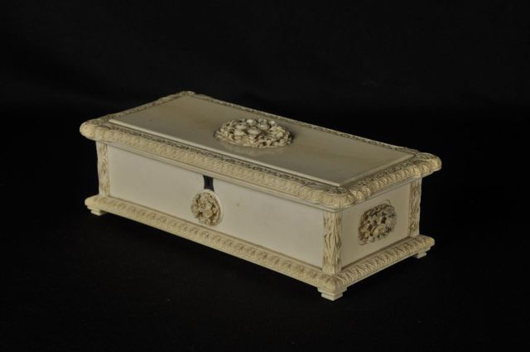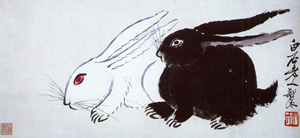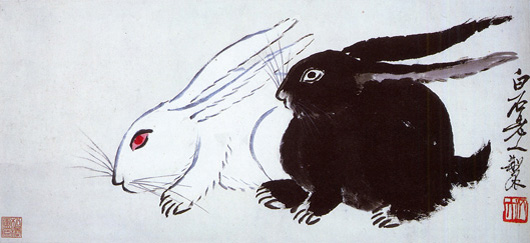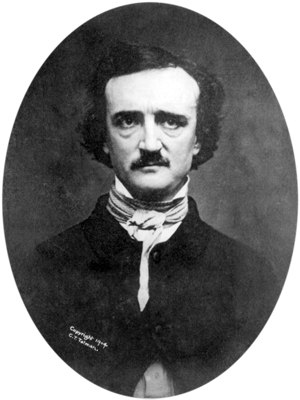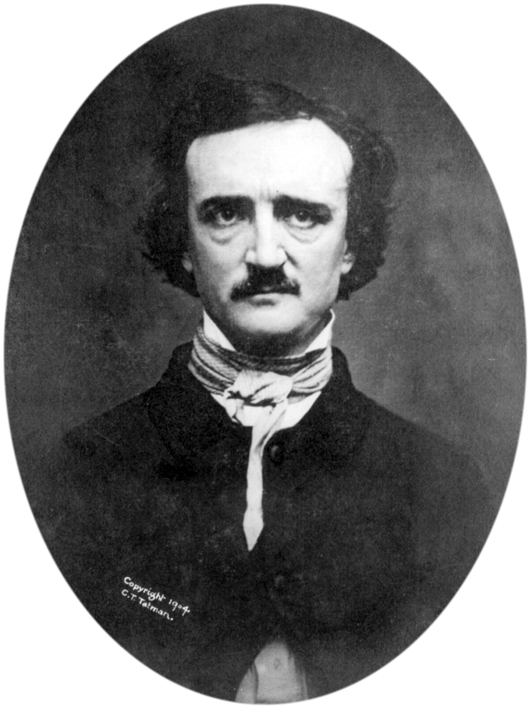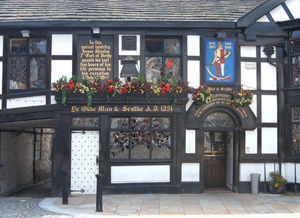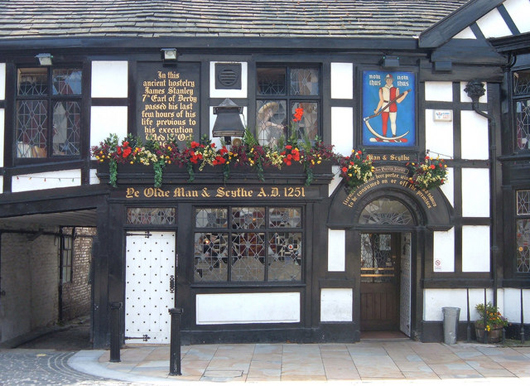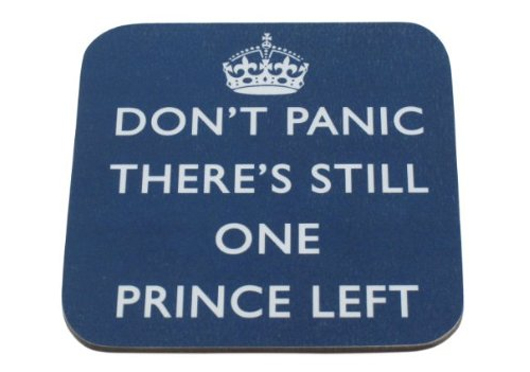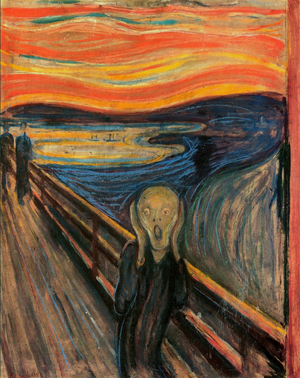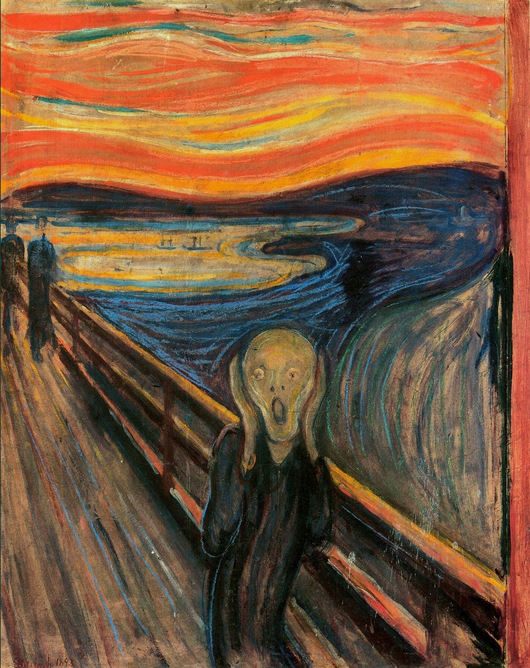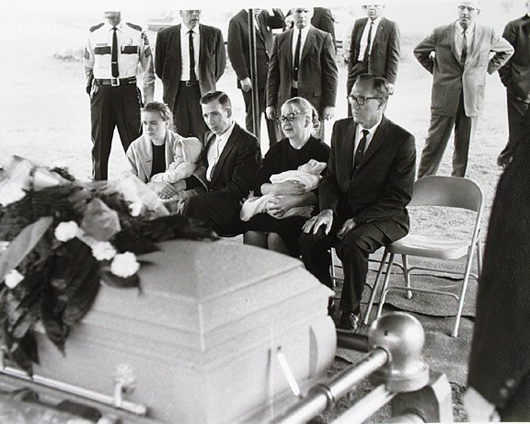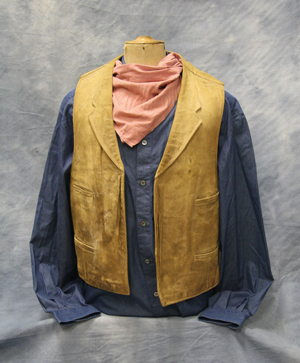
MESA, Ariz. — Before Jeff Bridges so vividly reinterpreted the Rooster Cogburn character for a new generation, John Wayne immortalized the crusty U.S. marshal in Paramount’s original 1969 film production of True Grit. Appealing to Hollywood memorabilia collectors, John Wayne fans and Western aficionados, High Noon is excited to announce that the original shirt, vest and scarf worn by Wayne in the now-classic movie will be a showcase lot at their High Noon Western Americana Auction, which will be held on Saturday, Jan. 29, at the Phoenix Marriott Mesa.
LiveAuctioneers will provide Internet live budding.
This famous getup donned by the one-eyed marshal was originally acquired in the 1970s by Gary Hess, an employee of the Duke Engineering Co., from Wayne himself. This lot will be offered with notarized letters of provenance. Lot 172 – John Wayne’s True Grit shirt, vest and scarf carries an estimate of $20,000-$30,000.
High Noon Western Americana of Los Angeles has announced that their Jan. 29-30, 2011 Western Americana Weekend Event will begin their year-long celebration of the powerful cultural and historic influences that the more than 560 American Indian tribes have had on the this country. Their culture, spirit and endurance are deeply woven into each of our lives. High Noon is committed to ensuring that, through education and promotion of who they were and continue to be, that their culture will continue to thrive and grow even stronger.
2010 for High Noon was a landmark year, seeing record sales in both Mesa and New York fueled by the Roy Rogers Museum sales and the Maximilian saddle, being catapulted to the front of major media with a two-page spread in the Wall Street Journal and countless other national media attention from ACB News to CNN.
“2010 was an amazing year for the American cowboy,” said Linda Kohn Sherwood, co-owner of High Noon, “but we are ready to take a step back and turn our attention to those peoples who created the backbone of our land.”
To that end, the Jan. 29 High Noon Western Americana Auction will feature some of the most important American Indian art and artifacts to ever come to market.
“It’s through offering these treasures from these powerful nations, that we can do our part to ensure that their legacy is passed on to future generations,” said Kohn Sherwood.
The High Noon Western Americana Weekend Event will be held Jan. 29-30 at the Mesa Convention Center.
The High Noon Western Americana Antique Show will begin Saturday morning, Jan. 29, 9 a.m. when the doors open to the most extraordinary Western Americana shopping experience. For two days, Saturday and Sunday, over 150 of the nation’s finest exhibitors featuring the best in historic to contemporary Western Americana will fill the exhibit halls. The richness of the West will be exemplified in the fine selection of antique cowboy, Native American and Vaquero art and artifacts. On the contemporary side, shoppers can indulge in original creations from some of the country’s top artisans in leather and silver — from clothing to furniture.
The High Noon Western Americana Auction on Saturday will feature extremely important pieces of the history and heritage of the American Indian. Sioux, Plateau, Kiowa, Cheyenne, Blackfoot and other tribes will be represented. Among the highlights in this category is a plateau pony beaded dress, circa 1860, in fine condition, estimated to achieve $40,000 to $80,000. Surpassing this estimate will be a Sioux man’s beaded shirt, circa 1880, also in fine condition. A wonderful Cheyenne beaded baby carrier, circa 1880, is estimated at $25,000 to $50,000 followed by an enchanting Sioux quilled elk dreamer dress (estimate: $30,000 to $50,000).
American Indian offerings won’t be the only category with extremely important lots. Likely one of the most important collection of bronzes to come to market will also be offered. Works by Joe Beeler, John Coleman, Harry Jackson and Bill Nebeker, among others, will draw national bidding. Coming from Joe Beeler will be his signed bronze on wood base Crazy Horse, which is expected to achieve $15,000 to $25,000. Keokuk Sac and Fox Chief, a signed bronze in wood base by John Coleman is estimated at $6,000 to $8,000.
Western American fine art offerings will also be exceptional with artist Will James highlighting this category. Entitled Wild Horses, this important signed oil on board is estimated to earn $50,000 to $100,000.
For over 20 years, High Noon has deservedly earned a reputation for representing the most important and finest saddles in the world. This is what caught the attention of the Wall Street Journal resulting in their Sept. 21 two-page editorial coverage of saddles as an investment with High Noon noted as the auction house which represents the finest and most important.
The January 2011 auction won’t disappoint saddle collectors. Several historic saddles will be offered with three Bohlin saddles at the top of this category. An Edward H. Bohlin Machris model parade saddle is estimated at $35,000 to $60,000 followed by a Taxin model Edward H. Bohlin parade ensemble expected to achieve $40,000 to $60,000. An Edward H. Bohlin Dick Dickson Jr. Saddle is estimated at $25,000 to $50,000.
Furthering exceptional works from Bohlin will be truly one-of-a-kind pieces from the car of a Southern California, Yucca Valley personality. From the Bohlin mounted longhorns on the front, to the Bohlin engraved Colt knobs, handles, Bohlin saddlebags and the Bohlin silver saddle center console, these works of art that adorn this vehicle will all be sold as separate lots — nothing like it ever seen before. Even Elvis’ signature (among others) adorns the tonneau cover.
The High Noon auction will feature the finest bits, spurs, gun rigs, and as always, captivating pieces of Western Hollywoodiana. Boots? Oh, yes, the boot category is over the top.
The High Noon auction will feature over 300 lots in all. To order the fully illustrated printed catalog call the offices of High Noon at (310) 202-9010.
Bidding for the auction is available in person, by phone, absentee and live online through LiveAuctioneers.
The auction will begin promptly at 5 p.m. Saturday, Jan. 29, in the ballroom of the Phoenix Marriott Mesa Hotel adjacent to the Convention Center. Preview and bidder registration hours are: Thursday, Jan. 27, 3-7 p.m.; Friday, Jan. 28, 9 a.m.-5 p.m.; and Saturday, Jan. 29, 9 a.m.- 4:30 p.m.
For more information on this and the other very important lots to be showcased at this event, visit www.highnoon.com, email: info@highnoon.com or phone (310) 202-9010.
ADDITIONAL LOTS OF NOTE
